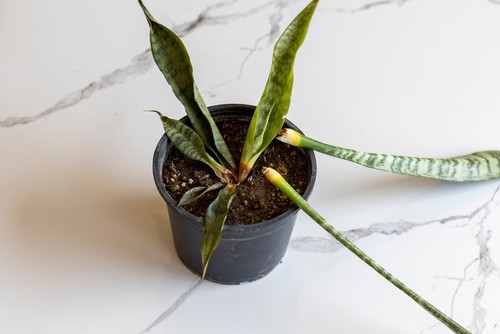Snake plants, also known as Sansevieria, are low-maintenance, air-purifying houseplants that can thrive in a variety of conditions. However, even the most resilient plants can experience issues if not cared for properly. One common concern is how to know if a snake plant is dying.
Recognizing the symptoms of a dying snake plant is crucial to saving it. Brown spots, drooping leaves, and mushy roots are all signs that something is wrong. However, these symptoms can also be caused by a variety of factors, making it important to identify the root cause of the issue.
Common causes of a dying snake plant include overwatering, underwatering, poor drainage, low humidity, and pest problems. Snake plant care mistakes, such as using the wrong type of soil or exposing the plant to extreme temperatures, can also lead to plant decline.
With proper care and attention, it is possible to revive a dying snake plant and prevent future problems.
Key Takeaways on How Do I Know If My Snake Plant is Dying?
- Recognizing the symptoms of a dying snake plant is crucial to saving it.
- Common causes of a dying snake plant include overwatering, underwatering, poor drainage, low humidity, and pest problems.
- With proper care and attention, it is possible to revive a dying snake plant and prevent future problems.
Learn why your other houseplants are dying from these other popular picks:
Recognizing the Symptoms of a Dying Snake Plant

Snake plants are known for their hardiness and ability to thrive in low light conditions. However, even these tough plants can suffer from neglect or environmental stress. Here are some common symptoms to look out for if you suspect your snake plant may be dying:
- Brown leaves: One of the most obvious signs of a dying snake plant is brown leaves. This can be caused by a variety of factors, including overwatering, underwatering, or exposure to extreme temperatures.
- Drooping or wilted leaves: If your snake plant’s leaves are drooping or wilting, it may be a sign that the plant is not getting enough water. However, it can also be a symptom of overwatering or root rot.
- White or brown spots: White or brown spots on the leaves can be a sign of fungal or bacterial infection. This can be caused by overwatering or poor air circulation.
- Yellow leaves: Yellowing leaves can be a sign of a variety of issues, including overwatering, underwatering, or nutrient deficiencies.
- Curling leaves: If your snake plant’s leaves are curling, it may be a sign of underwatering. However, it can also be a symptom of overwatering or exposure to extreme temperatures.
- Mushy or damaged leaves: If your snake plant’s leaves are mushy or damaged, it may be a sign of root rot or pest infestation.
- Pink or waxy leaves: Pink or waxy leaves can be a sign of exposure to extreme temperatures or sunlight.
Dying Snake Plant
Snake plants are known for their hardiness and ability to thrive in a variety of conditions. However, even the toughest plants can experience issues that lead to their demise. Here are some common causes of a dying snake plant:
1. Overwatering
Overwatering is one of the most common causes of a dying snake plant. When the soil is constantly wet, the roots can become waterlogged and start to rot.
Signs of overwatering include yellowing leaves, mushy stems, and a foul smell coming from the soil. To prevent overwatering, make sure to allow the soil to dry out completely between waterings.
2. Underwatering
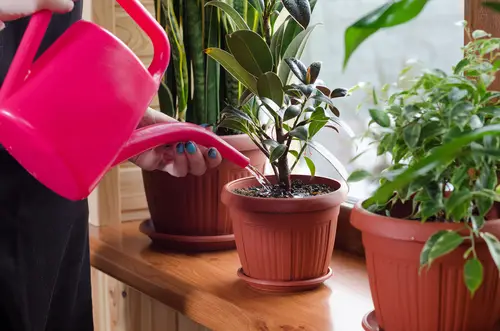
On the other hand, underwatering can also cause a snake plant to die. When a plant doesn’t receive enough water, its leaves will start to droop and turn brown. To prevent underwatering, make sure to water your snake plant regularly and thoroughly.
3. Root Rot
Root rot is a fungal disease that occurs when the roots of a plant are constantly wet. It can cause the roots to turn brown and mushy, and eventually lead to the death of the plant. To prevent root rot, make sure to provide your snake plant with well-draining soil and avoid overwatering.
4. Pest Infestations
Pests like spider mites, mealybugs, and sap-sucking pests can cause significant damage to a snake plant. They feed on the plant’s leaves and stems, leaving behind a trail of damage. To prevent pest infestations, inspect your plant regularly and use insecticidal soap or neem oil to treat any issues.
5. Extreme Temperatures
Snake plants prefer temperatures between 60-85°F (15-29°C). Exposure to extreme temperatures, such as cold drafts or direct sunlight, can cause the leaves to turn brown and dry out. To prevent damage from extreme temperatures, make sure to keep your snake plant in a location with consistent, moderate temperatures.
6. Fungal Infection
Fungal infections can occur when a plant is exposed to consistently moist conditions. They can cause the leaves to turn brown and develop spots or patches. To prevent fungal infections, make sure to provide your snake plant with well-draining soil and avoid overwatering.
By understanding the common causes of a dying snake plant, you can take steps to prevent these issues and keep your plant healthy and thriving.
Snake Plant Care Mistakes
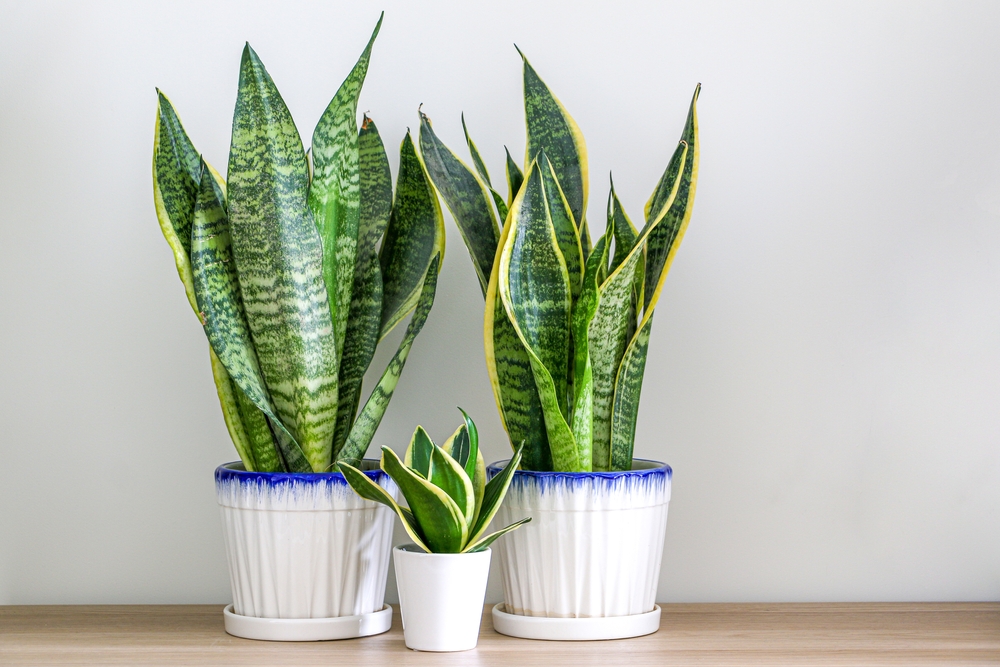
Snake plants are generally easy to care for, but there are some common mistakes that can lead to a dying plant. Here are some of the most common snake plant care mistakes:
1. Overwatering
Overwatering is one of the most common mistakes people make when caring for a snake plant. These plants are succulents, which means they store water in their leaves.
If the soil is consistently wet, the roots can rot, and the plant can die. It’s essential to let the soil dry out between waterings. The frequency of watering will depend on the growing conditions, but a good rule of thumb is to water when the top inch of soil is dry.
2. Underwatering
On the other hand, underwatering can also be a problem. If the soil is too dry, the leaves can become wilted and brown. It’s important to water the plant thoroughly when you do water it, so the water reaches the roots. It’s better to underwater a snake plant than to overwater it, so if in doubt, wait a little longer before watering.
3. Poor Drainage
Snake plants need well-draining soil and a pot with a drainage hole. If the soil doesn’t drain well, the roots can become waterlogged, leading to root rot.
If the pot doesn’t have a drainage hole, excess water can accumulate in the bottom, leading to the same problem. It’s essential to use a well-draining potting soil and a pot with a drainage hole.
4. Direct Sunlight
While snake plants can tolerate bright light, direct sunlight can scorch their leaves. It’s best to place them in a location with bright, indirect light. If the plant is getting too much direct sun, move it to a shadier spot.
5. Overfertilizing
Overfertilizing can also be a problem. Snake plants don’t need a lot of fertilizer, and too much can lead to salt buildup in the soil, which can damage the roots. It’s best to fertilize the plant once or twice a year, using a balanced fertilizer.
6. Low Humidity
Snake plants are tolerant of low humidity, but if the air is too dry, the leaves can become brown and crispy. It’s a good idea to mist the leaves occasionally or place a tray of water near the plant to increase the humidity.
7. Poor Growing Conditions
Finally, it’s important to provide the right growing conditions for a snake plant. They prefer well-draining soil, bright, indirect light, and temperatures between 60°F and 85°F. If the plant is not thriving, it may be due to poor growing conditions.
How to Revive a Dying Snake Plant
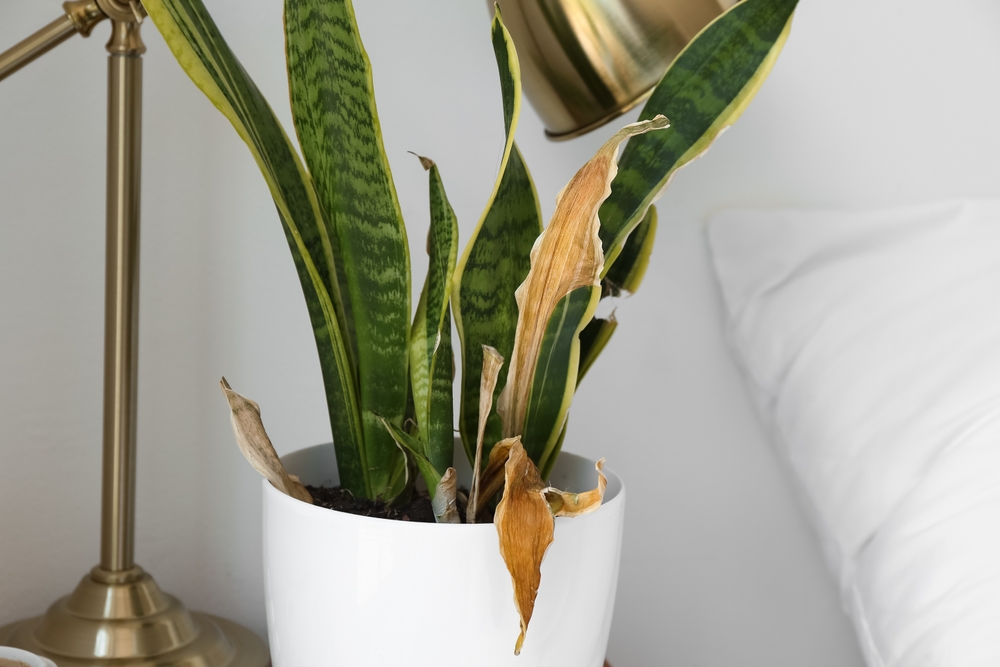
If you notice that your snake plant is showing signs of being unhealthy, it might be dying. Fortunately, snake plants are resilient and can be revived with the right care and attention. Here are some steps you can take to revive your dying snake plant:
Check the Leaves
The first thing you should do is check the leaves of your snake plant. If you notice brown or droopy leaves, it might be a sign of neglect or environmental changes.
To revive your snake plant, you should remove any unhealthy leaves by pruning them off at the base of the plant. This will allow the plant to focus its energy on new growth.
Check the Roots
Another thing you should check is the roots of your snake plant. If the roots are mushy or have a foul smell, it might be a sign of overwatering or root rot.
To revive your snake plant, you should remove it from its pot and inspect the roots. If you notice any mushy roots, you should trim them off with clean scissors. Then, repot your snake plant in fresh potting mix and a well-draining pot.
Treat for Pests
If you notice any pests on your snake plant, such as scale insects, you should treat them immediately. Pesticides can be effective, but make sure to use a pesticide that is safe for indoor plants, such as neem oil. Follow the instructions on the label carefully and treat your plant regularly until the pests are gone.
Provide Proper Lighting
Snake plants prefer bright, indirect light, but they can also tolerate low light conditions. If your plant is not getting enough light, it might be stunted or have leggy growth. To revive your snake plant, make sure it is getting the right amount of light for its needs.
Propagate Your Plant
If your snake plant is beyond revival, you can propagate it to create new plants. Propagating snake plants is easy and can be done by dividing the plant’s rhizomes and repotting them in fresh potting mix. This will give you new, healthy plants to care for.
Other Tips
Here are some other tips to help revive your dying snake plant:
- Avoid overwatering your plant, especially in the winter months when the plant is dormant.
- Use a well-draining potting mix to prevent root rot.
- Provide a humid environment for your plant by misting it regularly or placing a tray of water nearby.
- Avoid exposing your plant to extreme temperatures or drafts.
Preventing Future Problems with Your Snake Plant
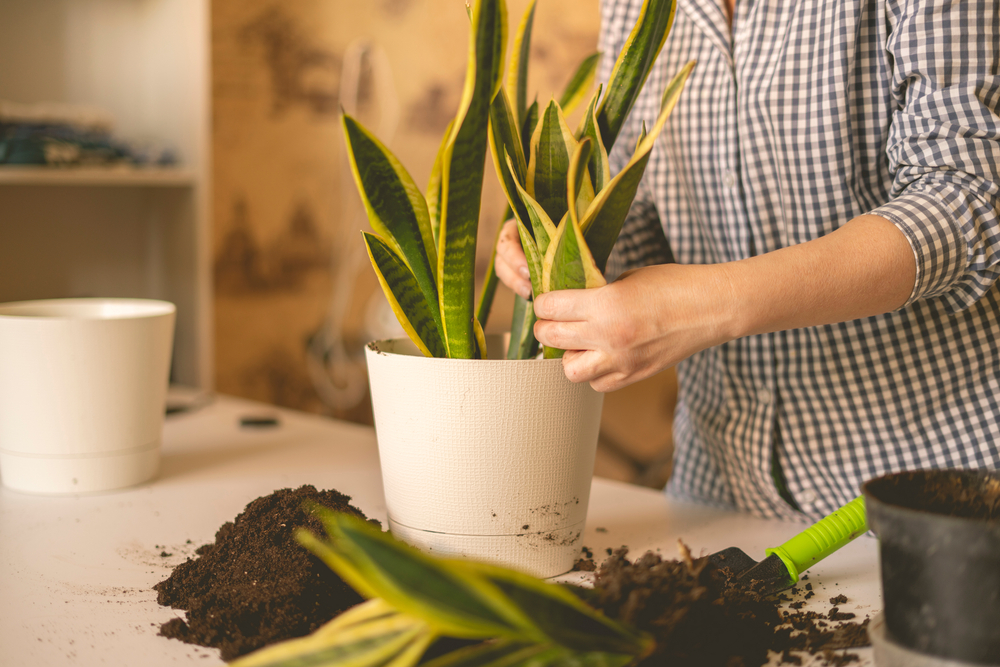
Prevention is always better than cure, and this is especially true when it comes to caring for your snake plant. By taking some simple steps, you can help ensure that your plant stays healthy and vibrant for years to come.
1. Watering:
One of the most common causes of problems with snake plants is overwatering. To prevent this, make sure to let the soil dry out completely between waterings. This can vary depending on the environment, but generally, once a week is sufficient. Avoid watering your plant too frequently, as this can lead to root rot and other issues.
2. Drainage:
Snake plants need well-draining soil to thrive. Make sure your pot has drainage holes to allow excess water to escape. If your pot doesn’t have drainage holes, it’s best to repot your plant into one that does.
3. Soil:
Snake plants prefer well-draining soil that is rich in nutrients. A good potting mix for snake plants should be a mix of peat moss, perlite, and sand. Avoid using heavy soils that retain too much moisture, as this can lead to root rot and other issues.
4. Lighting:
Snake plants prefer bright, indirect light. Direct sunlight can scorch the leaves and cause them to turn brown. If your plant is not getting enough light, it may become leggy and stunted. If it’s getting too much light, the leaves may curl or develop white spots.
5. Temperature and Humidity:
Snake plants are resilient and can tolerate a wide range of temperatures and humidity levels. However, they prefer temperatures between 60 and 85°F and humidity levels between 40 and 50%. Avoid exposing your plant to extreme temperatures or cold drafts.
6. Pests and Diseases:
Keep an eye out for common pests like spider mites, mealybugs, and scale insects. If you notice any signs of infestation, treat your plant with an insecticidal soap or pesticide.
Additionally, monitor your plant for signs of fungal infections like powdery mildew. If you notice any signs of disease, remove the affected leaves and treat your plant with a fungicide.
7. Repotting:

Snake plants should be repotted every 2-3 years to ensure they have enough room to grow. When repotting, make sure to use a well-draining soil mix and a pot that is slightly larger than the current one.
Frequently Asked Questions
What are the signs of a dying snake plant?
A dying snake plant will show several signs such as browning and softening leaves, drooping, and wilting. The leaves may also lose their color and become yellow or brown. If the plant is severely stressed, the leaves may fall off or break easily.
How can I save a snake plant that is dying?
To save a dying snake plant, you need to identify the cause of the problem. Common causes include overwatering, underwatering, pests, and diseases. Once you have identified the cause, you can take the necessary steps to fix the issue.
For example, if the plant is overwatered, you need to let the soil dry out before watering it again. If the plant is infested with pests, you can use natural remedies or insecticides to get rid of them.
What causes snake plant leaves to turn brown and soft?
Brown and soft leaves on a snake plant are usually a sign of overwatering. When the plant is watered too frequently or the soil doesn’t drain well, the roots can become waterlogged, leading to root rot. As a result, the leaves can turn brown and soft.
What does snake plant root rot look like?
Snake plant root rot looks like brown, mushy roots that have a foul smell. The leaves of the plant may also turn yellow or brown and become soft to the touch. If you suspect your snake plant has root rot, you should take immediate action to save the plant.
How do I know if my snake plant is dehydrated?
A dehydrated snake plant will have dry, crispy leaves that may curl at the edges. The leaves may also lose their color and become yellow or brown. To check if your plant is dehydrated, you can gently touch the soil. If it feels dry to the touch, it’s time to water the plant.
What are some tips for propagating a snake plant?
Propagating a snake plant is relatively easy. You can either divide the plant or take cuttings from the leaves. To divide the plant, gently remove it from its pot and separate the roots into smaller sections.
Plant each section in a new pot with fresh soil. To take cuttings, cut a leaf into sections and plant each section in a pot with moist soil. Keep the soil moist and the plant in a warm, bright location until new growth appears.

Hey, I’m Lisa and I’ve been an avid gardener for over 30 years. I love writing, talking and living in the garden! Feel free to connect with me on my socials below

